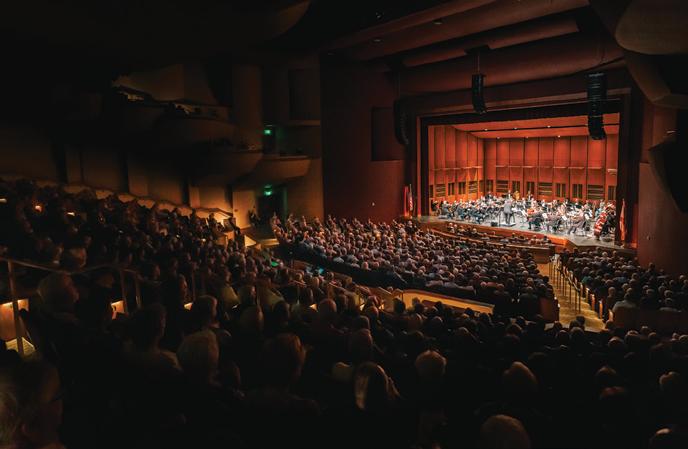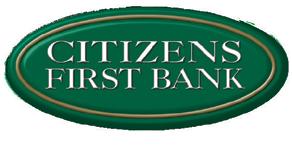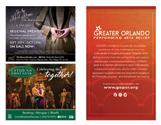CLASSICAL CONCERT -SERIESMOZART




Much like the building’s namesake, my grandmother, Sharon L. Morse, we love all varieties of the performing arts here. It is in her memory that I, along with my amazing team of artists and arts administrators, strive to bring many different types of the highest quality entertainment here to The Sharon.
Since opening in 2015, we have strived to establish your trust, that a show at The Sharon is a show worth seeing. Perhaps you find yourself here today to see a concert of one of your favorite musicians, or to take in the national tour of a Broadway show. Either way, we encourage you to consider trying out a new show that perhaps you haven’t heard of before, knowing that it has been intentionally curated by our team.
We welcome you to The Sharon: a place for you to see an old favorite, but also a place to discover your new favorite. I sincerely hope you enjoy the show today, and I look forward to seeing you here again soon!
See You at The Sharon,
W hitney Morse Artistic DirectorIt is an immense pleasure to introduce this concert series and be able to interpret masterpiece of the greatest composers who ever lived, Mozart died aged just 35. But despite his short life, he wrote some of his most enduring and beloved pieces of classical music. A prodigy who spent much of his childhood touring Europe courting patrons and royalty, Mozart continued to compose music of sublime beauty, wit and skill. His legacy includes three famous operas with librettos by Lorenzo Da Ponte (The Marriage of Figaro, Don Giovanni and Cosi fan tutte), 41 symphonies, 27 piano concertos, 26 string quartets... and this before even reaching the piano sonatas and sacred music.
Musically yours, Pasquale Valerio
Concert Sponsor: Steinway Piano Gallery Tampa
W. A. Mozart Symphony N.23 in D major K.181
W. A. Mozart
Piano Concerto N.21 In C major K.467
~ Intermission ~
W. A. Mozart
Symphony N.41 in C Major K.551
The Symphony No. 23 in D major K 181 is a composition by Wolfgang Amadeus Mozart, completed in Salzburg on May 19, 1773.
It is one of the “ so called “ Salzburg symphonies, named after Alfred Einstein, who speculated that they were all commissioned by an unknown Italian patron. The others are No. 22, no. 24 and no. 26.
The Symphony No. 23 is sometimes called "Overture", even if the autograph score marks the title "Sinfonia". This is due to the fact that the symphony consists of a single uninterrupted movement made up of 3 different tempos.
Wolfgang Amadeus Mozart Piano Concerto N.21 was completed on March 1785, four week after the completion of the previous D minor piano concerto K.466. Mozart gave the premieres of most of these “golden dozen” concertos himself, often within days of their completion, and usually at subscription concerts designed for his own benefit. Such was the case with this piece. Its first performance took place, with great success, on March 10, 1785.
. The first movement (marked allegro maestoso) opens with suspended animation. Strings quietly whisper the march-like theme, which grows steadily into a vigorous and majestic subject for the whole orchestra. Another theme from the winds is presented, but does not emerge again until the end, a recluse within the body of the movement. Other themes of short duration also appear before the march is recalled and the orchestra concludes its complex opening. After the introduction, the soloist enters with independent, new ideas unfolding in a delicate beginning. Then the piano spins its own tunes. Together the soloist and orchestra work out a unique relationship in which both forces seem concerned with their own material. “In no other concerto does Mozart carry so far the separation between the two…Mozart has succeeded in making it (the piano) as capable a vehicle of his thought as the orchestra.” (Tovey) The movement ends quietly and is followed by a cadenza.
The second movement is an andante (slow). Its mood is dream-like and elegant. The orchestra opens the scene with muted strings and over their hushed rippling the main emerges. Here is the now familiar “Elvira Madigan” theme. The piano enters with the luxuriant ease and sings its part throughout the movement with steady and controlled presentation, traversing many keys, interlacing with the orchestra, resulting in lavish but subdued color. Tovey concludes; “No richer and more enchanting tints could be drawn from the palette which Mozart had at hand.” The hazy modulating atmosphere and calm triplets create a nocturne feeling reminiscent of the works of Chopin yet to come. At times the music seemed experimental in terms of the harmonies,which the composer used.
Mozart’s father, Leopold, even suggested that perhaps the copyist had made a mistake because of these “wrong sounds.”
The third movement finale, a rondo, re-establishes the original strutting mood. After the fantasy quality of the andante, the sturdy energy comes as a shock. The piano starts off the romp with a little solo, and then the full activity begins using a theme which Mozart borrowed from his concerto for Two Pianos, K. 365. The mood is jolly, holding to an opera buffa attitude. The bounce and saucy attitude continues until the close, offering a flashing conclusion which undoubtedly delighted his aristocratic and unflinching world. Mozart’s father was delighted with this work.
The Jupiter Symphony is the largest and most complex of Mozart’s symphonies. Although at moments jovial, as if Jupiter himself were laughing heartily in the celebratory key of C Major, the work generally carries a serious spirit especially in the first and fourth movements that hints at the grand Romantic symphonies, which were soon to come with Beethoven. The authoritative opening movement, in sonata form, is followed by a more subdued second movement, with a lyrical mixture of themes in major and minor keys. The third movement is a stately minuet, and the fourth and final movement, again in sonata form, is bold and brisk, with a strident fugal coda that is a hallmark of the piece.
Mozart’s Jupiter Symphony inspired many composers, especially Haydn, who used it as a model for his own Symphony No. 95 and Symphony No. 98. Perhaps the most succinct reflection on the work’s importance is found in the critiques of German composer and journalist Robert Schumann , who in 1835 wrote, “About many things in this world there is simply nothing to be said—for example, about Mozart’s C-Major symphony with the fugue, much of Shakespeare and some of Beethoven.” For Schumann, at least, the Jupiter Symphony secured for Mozart an eternal position within the realm of the masters.
Pasquale Valerio is the creator nurturer, mentor, and guiding light for the villages Philharmonic Orchestra and Chorale.

Pasquale was born in Naples Italy and began his music studies at the age of nine he began studying Trumpet Performance at The N. Piccinni Conservatory of Music, graduating in 1985. His studies were not limited to trumpets but included complimentary piano studies, harmony, and lectures from maestro Filippo Veniero, who was his guide and mentor from 1976 to 1989 period his adult musical career began during his national service as a member of the Carabinieri (Italian Military Police). Fortunately for his musical development, most of this was with the band. After his discharge, he began playing trumpet at the Naples Opera House and he began studying conducting. Pasquale Valerio served as an apprentice under Sir Antonio Pappano for six years period Pasquale followed him around the world from 2006 to 2011 and learned directly from the conductor of the Royal Opera House in London period to that end, Pasquale believes fully in the music of education through music and that children are never too young to start discovering the power of harmony.
In 1996, Pasquale relocated to the United States to continue his conducting studies with Jay Whitney and Gunter Schmidt. In 2004 he became the founder and the musical director of Villages Philharmonic Orchestra where he continues to serve today. Maestro Valerio was the founder of the Lake Sumter Chamber Orchestra and the co-founder and conductor of the Florida Lake Symphony from 2005 to 2006. Pasquale has been regularly invited as a guest conductor at the Orchestra Philharmonic 900’, Teatro Regio, and Viotti International Music festival.
In 2023, Pasquale was appointed as a Conductor Visiting Professor LPMAM for London Performing Academy of Music.
Born in Albenga, she began studying the piano at age 5, then studied at the Conservatory "L. Cherubini” in Florence with Alessandro Specchi. With Norberto Capelli she graduated in Piano with honors. She obtained an II-level concert studies degree at the Conservatory of Perugia with full marks and honors.

She perfected herself with the master’s Carlo Grante and Fabio Bidini. As a soloist, she has performed in Italy and abroad with essential orchestras, including the "Archi della Scala", the Orchestra of the Teatro Regio of Turin and the Philharmonic '900, the Chamber Orchestra of the Petruzzelli Theater of Bari, the Symphony Orchestra of Perugia and Umbria, the Guido Cantelli Orchestra of Milan, the Lombardy Chamber Orchestra, the Donetsk National Philharmonic Orchestra S. Prokofieff, the State Philharmonic of Plovdiv, the Kuban Symphony Orchestra of Krasnodar, the Mihail Jora Philharmonic Orchestra of Bacau, the National Chambers Orchestra of Armenia and performed in prestigious venues including Teatro Regio in Turin; Auditorium of the Conservatory of Perugia, Sala Verdi and Sala Puccini of the Milan Conservatory, Teatro dal Verme in Milan, Opera Theater of the Sanremo Casino, Teatro degli Animosi in Carrara, Petrarca Theater in Arezzo, Plodvid Concert Hall, Municipal Concert Hall of Krasnodar, Ateneu Hall of Bacau, Komitas Chambers Hall.
She has made television and radio recordings in Italy and abroad, the last broadcast by Mediaset with "I Solisti dell ‘Orchestra Cantelli" in Mozart's Concerto K.414 conducted by Alberto Veronesi and published on DVD for EGALIBRI of Turin attached to the book "Afghanistan - Culture as a challenge for reconstruction". With the Archi della Scala you record Mozart's Concerto K.271 “Jeunehomme” on CD.
In 2018 she inaugurated the reopening of the Teatro dei Philharmonic in Ascoli directed by Maestro Donato Renzetti and the Gioacchino Rossini Philharmonic.
On November 7, 2005, she was the first western woman, after 22 years of war, to give a recital in Kabul for the inauguration of the "Victoria Music School", of which she was artistic director and visiting professor at the Faculty of Fine Arts. Art of Kabul.
Former piano teacher at the Liceo Musicale of Arezzo, since 2018, she for the Music School of Fiesole, chair of piano practice in the three-year university courses.
From 2010 to 2015, she was appointed by the Tuscany Region to hold the position as an executive member of the Tuscany Regional Orchestra Foundation (ORT).
In the three years 2018-2021, she was Music Production Manager of the Guido d'Arezzo Foundation.
SEPT 3 / MAY 6
Sunday, September 3 ..........................................Labor Day Celebration Pops
Sunday, October 8 ............................................ American Italian Celebration
Tuesday, November 28 ......................................................................... Messiah
Monday, December 18 .................................................... Holiday Celebration
Tuesday, December 19 .................................................... Holiday Celebration
Sunday, January 28 ................................................... Classical Concert Series
Wednesday, February 14 ..................... American Music Celebration of Love
Monday, March 18 ..................................................... Classical Concert Series

Sunday, April 21 ......................................................... Classical Concert Series
Monday, May 6 .................. Opera Gala Magical Moments of Opera Scenes
MAY 10 // SUBSCRIPTIONS* & INDIVIDUAL TICKETS ON SALE
CHOOSE AT LEAST 4 SHOWS & GET 10% OFF GET ALL 9 SHOWS & GET 15% OFF
Aleksandr Zhuk,Concertmaster
Stewart Kitts
Marius Tabacila
Jose Guedez
David Dajiang
Carlos Jaques
Cindy Qi
Baoling Xu
SECOND VIOLIN
Gregory Carreño, Principal
Elizabeth Kitts
Sandy Kitts
Luisamar Navarro
Elaina Cook
Vladimir Sklyarov
Sheryl Genco
Yenifer Laurens
VIOLA
Angelo Goderre, Principal
Juan Siviero
Rafael Ramirez
Andrea Oliveira
Francia Laurens
Oana Potur
George Alexander, Principal
Olga Beliaieva
Helen Smith
Petar Kacenovici
Kevin Gallagher, Principal
Luis Luna
Mikey McCabe
Trent Harper
FLUTE
Nicolas Real, Principal
OBOE
Amy Collins, Principal
Chanmi Kim
BASSOON
Chris Eberle, Principal
Kevin Fuller
Joseph Lewinsky, Principal
Chase De Carlo
TRUMPET
John De Paola, Principal
Tarcisio D’Addona
TYMPANI
Christopher Nolin
Blackston Financial Advisory Group

FMK Restaurant Group

Francesco’s Ristorante

Fross & Fross Wealth Management
Havana Country Club & Legacy Restaurant at Nancy Lopez Country Club by Suleiman Family Restaurants
Royal Décor Company

Sheds N More

ORCHESTRA CIRCLE
$10,000+
Margaret M. Dick
Linda Ferens
Maurice & Betsy Joy
Dean & Audrey
Throndsen
MAESTRO CIRCLE
$5,000 – $9,999
Augusto Bernardini
Jeff & Ursula Bergman
Charlotte & John Gates
David & JoAnne Kelch
Diane Kupchak
Peter & Mary Jane Moeller
Richard & Charlotte
Rahm
Mary Thomas
Don & Bonnie Waggoner
SYMPHONY CIRCLE
$2,500 – $4,999
Avrum Abramowitz
Sarah Jordan
CONCERTO CIRCLE
$1,000 – $2,499
Anonymous Donor
Steve & Donna Bell
John Canner
Bonita Carnes
Dennis R. Carney
David & Jeanette Colvin
Mr. & Mrs. Joseph
DeVuono
Ralph William Gingery
Carol Guglielm
Janet Howell
Doris Martin
George Neal
Darlene Pruett
Dr. & Mrs. Winfred
Stringer
Abbott & June Webber
Keith & Randee Workowski
$500 – $999
Katheryn Batman
Robert Becker
Michelle Boone
Charlotte Conway
Roger & Julie Cooper
Ruth DiMare
Richard & Jeanne
Geoffrion
Richard Hoag
Noel Kott
William & Sharron
Leonhirth
Robert & Sara McPhail
Norman Lee & Terri
Schaffer
Paul & Dorian Schnirring
Ken & Mary Shutts
Joan Spires
Anna Whipple
$100 – $499
Bernie & Elizabeth Albrecht
Gene Armani
Randall & Gemma
Benjamin
Linda Boese
Doug & Sharon Bretz
Thomas & Linda Casey
Kenny & Elizabeth Constant
Glenda Crandall
Barbara Dipol
James & Karen Donavan
Mary Dzuro
Greg & Mary Feichtel
Jack & Nancy Fieldman
Leslie Flanders
Mia Ford
William & Gail FraserGiacchi
Lisa French
Peter Fritz & Carol Mangan
Mary Ann Garback
Alan Geller
Greg & Carolynn Gilbert
Doris Goodwin
David & Kathleen Haviland
Debbie Halye
Richard & Susan Jacobs
Marlene Knopf
Brad Koozman
Gregory & Bonnie Larson
Gayle Marra
Eileen McCabe
James McQuiniff
Nick & Donna Meister
Thomas Murphy
Fritz & Debbie Neal
John Nickelson
Phillip Oliveira
Robert A. Phillips
Ron & Grace Ranger
Barbara Reynolds
Frank & Deborah Salerno
Paul & Rita Segnatelli
Andrew & Mary Sloan
George Stenz
Tony & Joanne Sutylo
Donna Thompson
Roy & Jackie Ullrich
Richard & Grace Waller
Robert & Joan Waller
Marie Washburn
Jeffrey Wheeler
Tera White
Theresa R. White
Carole Williamson
Bob & Debbie Wilson
Patricia Wilson
Mary Yankowski
Andrea Ziccarelli
Joseph Zientara
Up to $99
Barbara Athanasiou
Irene Coen
Louise Elwood
Susan Escobedo
Paul F. Gaecke
Jordan Galvarino
Paul & Ann Hagerty
Valery Heyduk
K. L. Hoffman
Irene Hong-McAtee
Lora MacPherson
Joanne Michalski
Donald Mooty
Robert Muzzi
Patrice Pastore
Geraldine Piscitelli
Marianne Reinhard
Sally Rowe
Erika Schaffer
Joyce Smidt
Robert Smidt
C & H Van Benthuysen
Eric Williams
Susan Wright
Bill Barnes: Susan Escobedo
Fred Boyd: Frank & Janet
Argenziano
Fred Boyd: Mr. & Mrs. Manning
Fred Boyd: Don & Janet
Schiegel
Carolyn Johnson: Richard Johnson








Increase your visibility by marketing your message to The Sharon L. Morse Performing Arts Center’s local, engaged audience, as well as advertise in The Studio Theatre Tierra del Sol’s Programs and our monthly Digital Newsletter, The Scoop!






For information on prices, ad sizes, and availability, please email us at marketing@significantproductions.org.

